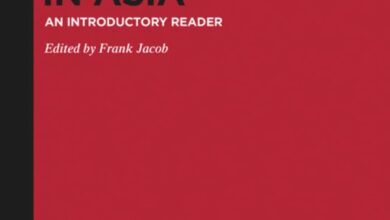Genocide – Confusion with numbers – Julian Francis
Genocide – Confusion with numbers
Julian Francis
bdnews24
15th Mar 2015
Every year since 1971, the month of March brings back so many memories of the work we did in the refugee camps in India. It also brings back violent nightmares which have haunted me ever since Bangladesh became a free and independent nation.
Earlier this month, a Bangladeshi doctor, who saved many freedom fighters’ lives in a field hospital in Bangladesh in 1971, asked me, “Julian Bhai, how many refugees died in the refugee camps in 1971?”
My answer was “between 5% and 10%.” In real numbers, that means between 500,000 and 1 million.
However, there is no hard proof of which I am aware. All numbers of arrivals, departures, births, and deaths were recorded (supposedly) by each camp superintendent and there were over 1000 refugee camps. Where are those records? Do they still exist?
Obviously, it was difficult to be accurate with numbers. At any one border crossing up to 50,000 could cross the border per day. Roughly, you could estimate a total 9 million in the refugee camps and 1 million with friends and relatives.
We had heard of the genocide from the night of March 25. Thousands upon thousands were rounded up and shot, machine-gunned or bayoneted. From 25 to 31 March, it was estimated that about 200,000 Bengalis had been killed. An Italian priest living in Jessore at the time told me that in his district itself, about 10,000 had been killed in the 10 days after March 25.
It is most unfortunate that the details of mass graves all over the country (and the number of bodies) have not been properly recorded. Only the week ago, in Kaliganj, Gazipur, I heard of hundreds of Bangladeshi male Christians being machine-gunned into a mass grave nearby a church in 1971.
What about the actual numbers? By end of May 1971, I remember a Dhaka University professor Samir Paul, who was helping us, while a refugee, in organising camp activities. He told me that, until then, it was estimated that 1 million Bengalis had been killed inside Bangladesh.
It is very clear to me that many Bangladeshis died on their way to India and many more died after coming to the refugee camps as a result of the injuries – wounds incurred on the way. I saw people with bullet wounds and bayonet wounds and some of them did not manage to survive.
During the cholera epidemic, I remember that in one refugee camp of 15,000 persons, over 750 died in one month – about 5%. People should also remember that many of the refugee camps were severely flooded during the heavy monsoon of 1971. Sanitation could not be maintained and many died of gastro-enteritis as well as cholera.
By September 1971, hundreds of children were dying every day from malnutrition, and doctors were of the opinion that the malnutrition in the Indian refugee camps was worse than that of Biafra, where they had worked earlier. Many more children died as a result of the severely cold winter. In mid-November an accepted figure of numbers of children dying was 4,300 per day in the refugee camps alone. I remember attending a coordination meeting at that time when it was estimated that by the end of December 1971, up to 500,000 children would have died largely from malnutrition.
Aid officials of the time estimated that between 20 and 30 million Bangladeshis had been internally displaced inside Bangladesh and there would have been significant deaths from those numbers.
The US government archives may suggest that a total of only 300,000 died and the Pakistan archives say that only 2 million refugees came to India. Everyone should know that both these figures are complete nonsense!
Therefore, from my personal knowledge of the numbers of that time, a figure of 3 million deaths caused by Pakistani personnel and their collaborators is certainly quite realistic.
Julian Francis has been associated with relief and development activities of Bangladesh since the War of Liberation. In 2012, the Government of Bangladesh awarded him the ‘Friends of Liberation War Honour’ in recognition of his work among the refugees in India in 1971 and in 2018 honoured him with full Bangladesh Citizenship. In 2019, Julian was also honoured with the award of the OBE for services to development in Bangladesh.

